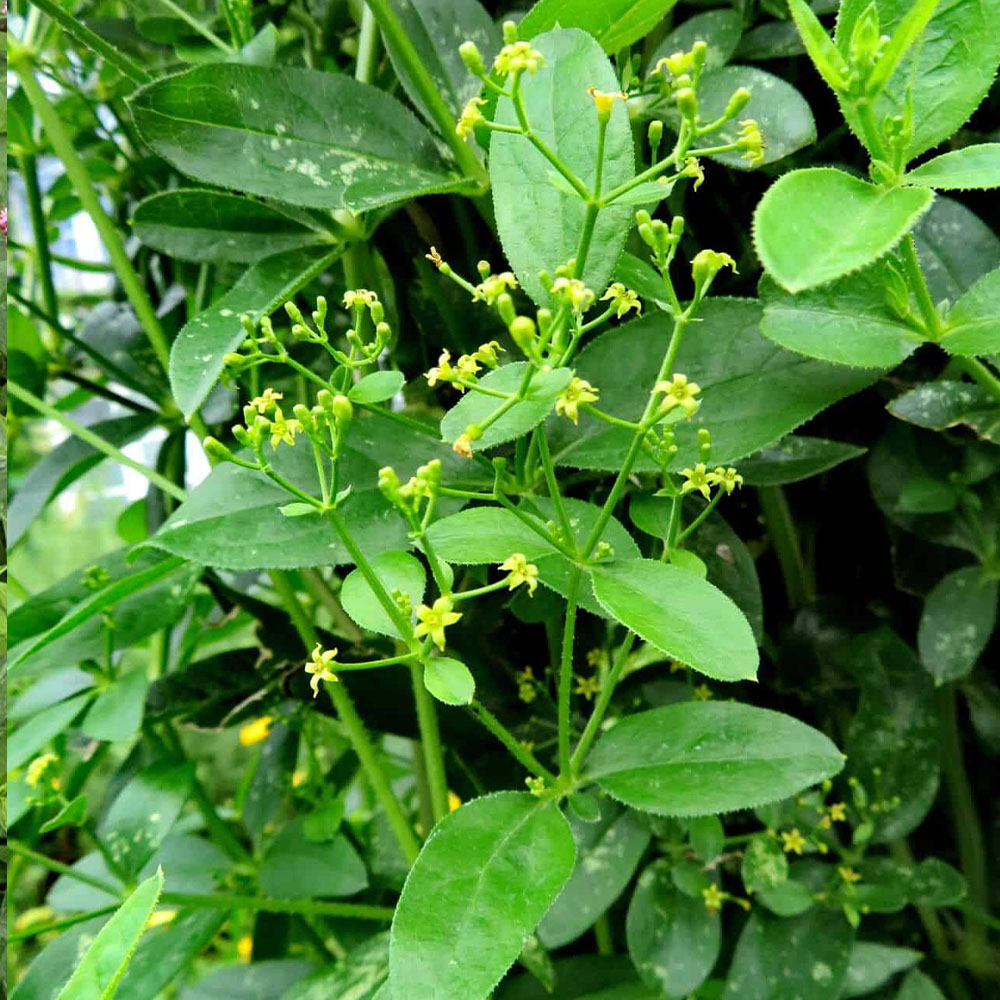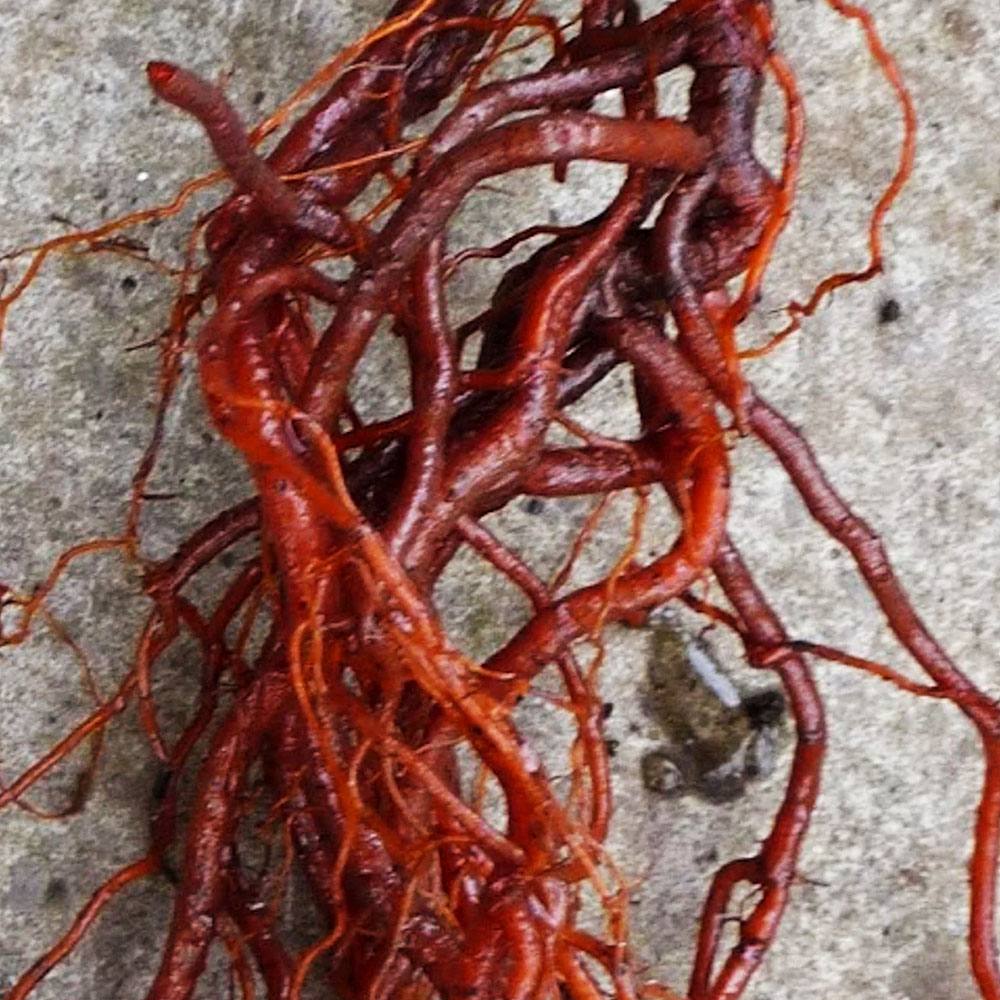-
 4,90 € × 1×€4.9
4,90 € × 1×€4.9
Customer matched zone "Locations not covered by your other zones"
“Rubia tinctorum” has been added to your cart. View cart
Rubia tinctorum
A rhizomatous perennial used to dye clothing red
Rated 0 out of 5
0 customer reviews
4,90 €
Only 18 item(s) left in stock!
Tags: bouquets, composition florale, fleurs, jardin, longue floraison, perennial, plant, secheresse, soleil, vivace
SKU: pda441
Category: Bees and Butterflies, DyeItYourself, Frost Hardy, Rewild

Rubia tinctorum
4,90 €
Only 18 item(s) left in stock!
Rubia tinctorum, commonly known as common madder or dyer’s madder, is a perennial climbing herb in the coffee family.
Native to the Mediterranean region and Western Asia, it was once cultivated across Europe for its roots, which yield the famous red dye known as alizarin.
The color is extracted from its roots, known as rhizomes, which are naturally orange-yellow and turn fluorescent red when exposed to oxygen.
The flowers of Rubia tinctorum are small and star-shaped, usually yellow-green, modest in size but numerous. These flowers are pollinated by small insects, mainly bees and flies, and give way to tiny round black berries by late summer. The fruits are not ornamental but serve an ecological function, attracting birds that disperse the seeds.
The foliage of madder is distinctive: narrow, lance-shaped leaves arranged in whorls of four to six around the stem, forming a regular, almost geometric pattern.
The surface of the leaves is slightly rough, another climbing aid, and they remain an attractive, deep green throughout the growing season.
Below ground lies the most valuable part of Rubia tinctorum — its thick, fibrous roots, which can extend over a meter in length.
These roots store the red dye compound alizarin, and for centuries they were harvested, dried, and ground to produce vibrant shades of red, rose, and orange for textile dyeing.
Before the advent of synthetic dyes in the 19th century, madder was one of Europe’s most important dye plants, grown commercially in France, the Netherlands, and the Levant. Even today, natural dyers prize it for its depth of color and historical significance.
👨🌾GARDENING TIPS👨🌾: Rubia tinctorum
-
- 🌱 In terms of maintenance, a soft pruning after flowering or in early spring will stimulate new growth
- Harvesting the roots regularly will prevent the plant from ‘invading’ or taking over your garden
- Pair with other dye plants such as Calendula officinalis and Tanacetum vulgare
👩🍳DYEING TIPS👩🍳
This is a delicate and disciplined art form, so I will refer to those whose tutorials and advice I have followed in the past.
-
- Celine Philippe – Teinture Sauvage – Dying with plants, a history
- Shepherd Textiles – Step by step dying process with Rubia tinctorum
- Suzanne Dekel – Step by step dying process and comparisons for color intensity
The Tales & The Botany
A piece of cotton dyed with Rubia tinctorum was recovered from the archaeological site at Mohenjo-daro, proving that the practice of dyeing clothing originates at least in the 3rd millennium BCE.
It has been used since then as a vegetable red dye for leather, wool, cotton and silk by many cultures and peoples.
For dye production:
-
- The roots are harvested after two years
- The outer red layer gives the common hue of the dye, the inner yellow layer can bring another level of refined color.
- The dye is fixed to the cloth with help of a mordant, most commonly alum.
Why and How?
The roots contain the acid ruberthyrin.
By drying, fermenting, or a treatment with acids, this is changed to sugar, alizarin (C14H8O4 – this is the red dye) and purpurin, which were first isolated by the French chemist Pierre Jean Robiquet in 1826.
In the “Capitulare de villis” (the 8th or 9th century text ordered by Charlemagne to guide the management of royal households), madder is a required plant in the gardens, mentioned as “warentiam”.
Purple dyes are also produced with madder: combining it with indigo, or using an iron mordant to flush out the blue hues.
🌱 Reproductive Biology: Rubia tinctorum
Madder grows best in full sun or light shade and prefers fertile, well-drained soil that stays moderately moist. It is hardy in temperate climates and can tolerate some drought once established, though it performs best with regular watering during dry spells.
Because of its climbing habit, it can be trained over low fences or allowed to form a sprawling groundcover if space permits.
The plant spreads by rhizomes, so it benefits from some containment or annual thinning.
Propagation is simple and can be done either by seed or by division of mature roots. Seeds are slow to germinate, sometimes taking several weeks, while root division offers faster establishment and ensures the new plants carry the same dye quality as the parent.
Roots for dyeing are usually harvested after two or three years of growth, when alizarin concentration is at its peak.
From a botanical standpoint, Rubia tinctorum is a fascinating plant — both ornamental and utilitarian.
It bridges the worlds of botany, history, and art, offering not only an elegant climbing habit and delicate flowers but also a direct link to the ancient craft of natural dyeing that colored the fabrics of civilizations for millennia.
Other Names
Rose madder
Common madder
Dyer’s madder
Garance des teinturiers
Origin:
North America
| Weight | 0,5 kg |
|---|---|
| Planting Season | March to May, September to November |
| Exposure | Full Sun |
| Frost Tolerance | -15°C to -20°C |
| Soil | Any, Well-Draining |
| Size | 0.3m H x 0.5m W |
Reviews
0
Rated 0 out of 5
0 customer reviews
5
0
4
0
3
0
2
0
1
0
Only logged in customers who have purchased this product may leave a review.
You may also like…
Solidago ‘Golden Shower’
Beautiful showers of yellow flowers
Beautiful showers of yellow flowers
Rated 0 out of 5
Helenium Flammendes Katchen
A perennial with fire colored flowers all summer long
A perennial with fire colored flowers all summer long
Rated 0 out of 5
Nepeta x faassenii
Catnip is known for its grey-green, aromatic foliage and masses of lavender blue flowers.
Catnip is known for its grey-green, aromatic foliage and masses of lavender blue flowers.
Rated 0 out of 5
Related Products
Tanacetum densum subsp amani
A shrublet composed of soft, finely divided silvery gray-white leaves.
A shrublet composed of soft, finely divided silvery gray-white leaves.
Rated 0 out of 5
Glechoma hederacea
A sweet smelling ground cover, producing little blue flowers all summer long.
A sweet smelling ground cover, producing little blue flowers all summer long.
Rated 0 out of 5
Sedum album
A low, multi-color ground cover.
A low, multi-color ground cover.
Rated 0 out of 5
Hieracium maculatum Leopard
A native perennial with blue-green leaves and a tall yellow flower
A native perennial with blue-green leaves and a tall yellow flower
Rated 0 out of 5
Satureja montana
A sweet smelling culinary herb from Europe
A sweet smelling culinary herb from Europe
Rated 0 out of 5
Euphorbia myrsinites
Known for its draping form of silver-gray foliage and radiant blooms.
Known for its draping form of silver-gray foliage and radiant blooms.
Rated 0 out of 5
Billbergia nutans
A bromeliad featuring a three colored, striped flower
A bromeliad featuring a three colored, striped flower
Rated 0 out of 5
Artemisia alba subsp camphorata
A highly fragrant, grey-green bush.
A highly fragrant, grey-green bush.
Rated 0 out of 5
Echinacea purpurea
A perennial with purple flowers all summer long
A perennial with purple flowers all summer long
Rated 0 out of 5
Cerastium tomentosum var. columnae
A grey-green spreading ground cover from the mountains.
A grey-green spreading ground cover from the mountains.
Rated 0 out of 5
Mentha x piperita ‘Chartreuse’
A spicy mint, known for its use in the production of liqueurs and herbal teas.
A spicy mint, known for its use in the production of liqueurs and herbal teas.
Rated 0 out of 5
Tradescantia Blushing Bride
Gorgeous blushes of pink and white that appear in the coldest nights.
Gorgeous blushes of pink and white that appear in the coldest nights.
Rated 0 out of 5
Achillea ptarmica Boule de Neige
White pompom flowers to attract bees to your garden all summer long.
White pompom flowers to attract bees to your garden all summer long.
Rated 0 out of 5
Jacobaea maritima
A wooly white perennial plant from the Mediterranean region.
A wooly white perennial plant from the Mediterranean region.
Rated 0 out of 5
Artemisia vulgaris Oriental Limelight
Striking green and yellow variegated foliage.
Striking green and yellow variegated foliage.
Rated 0 out of 5
Vinca minor
Looping elegance and ability to form a low flowering ground cover
Looping elegance and ability to form a low flowering ground cover
Rated 0 out of 5
Delosperma cooperi
A dwarf perennial known for its vermillion colored flowers
A dwarf perennial known for its vermillion colored flowers
Rated 0 out of 5
Erigeron kavinskianus
A daisy-like carpet of flowers
A daisy-like carpet of flowers
Rated 0 out of 5
recent view product
Echinacea purpurea
A perennial with purple flowers all summer long
A perennial with purple flowers all summer long
Rated 0 out of 5
Delosperma nubigenum
A resilient ground cover with bright yellow flowers
A resilient ground cover with bright yellow flowers
Rated 0 out of 5
Aster pringlei ‘Monte Cassino’
Exquisite clouds of delicate white flowers.
Exquisite clouds of delicate white flowers.
Rated 0 out of 5
Glechoma hederacea Dappled Light
A fragrant ground cover with brightly colored and unusual foliage
A fragrant ground cover with brightly colored and unusual foliage
Rated 0 out of 5
Sedum pachyclados
Dainty green/gray/green succulent with rosettes and a creeping stem that can either spread or cascade.
Dainty green/gray/green succulent with rosettes and a creeping stem that can either spread or cascade.
Rated 0 out of 5





















































There are no reviews yet.